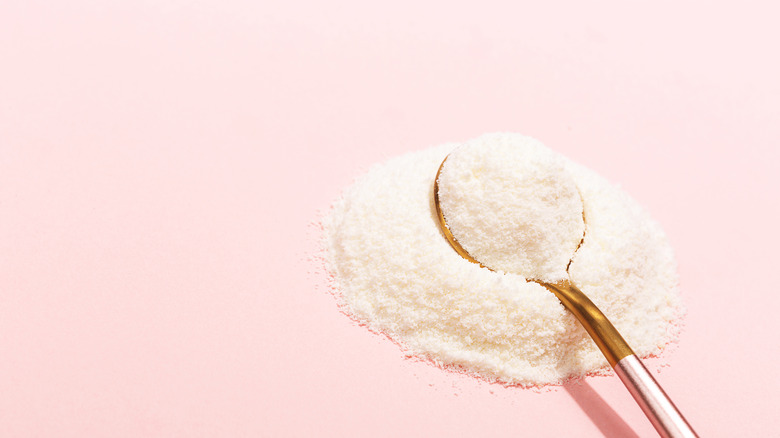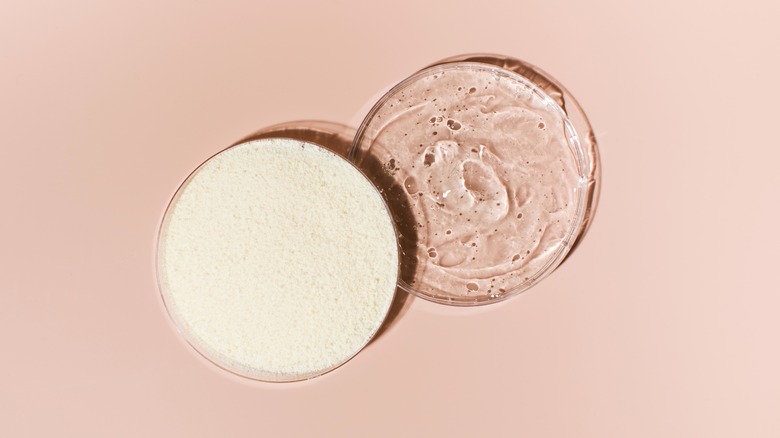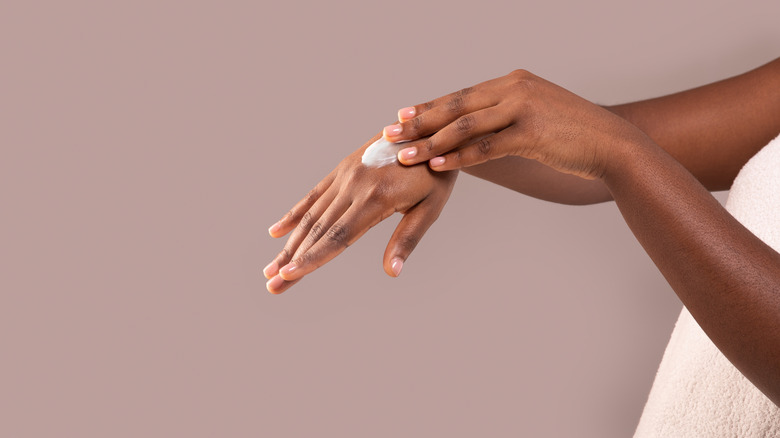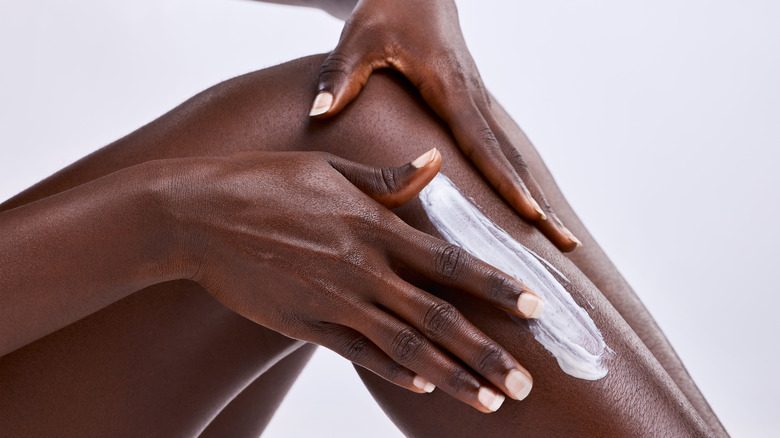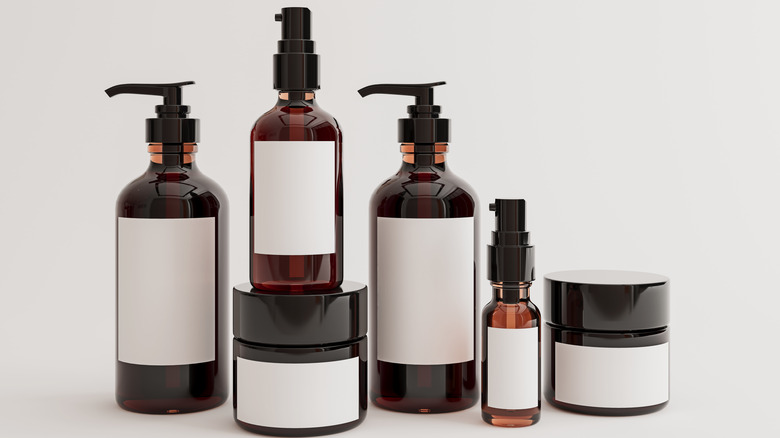Ecotin Is Skincare's Latest Must-Have Ingredient, But What Is It?
What if we told you that there exists a skincare ingredient that's just as hydrating as hyaluronic acid but with half the hype? Or that this same skincare ingredient is also capable of protecting your skin from environmental stressors like pollution and oxidation? What if we told you this same ingredient also protects the skin from the sun and can help soothe inflamed skin? We reckon you'd go: "Well, that's one overpowered multitasker of an ingredient." But ectoin can do all these and more for your skin.
In the world of skincare ingredients and compounds, there's almost always a new buzzword, some new component that's making the waves in our collective routines for being more innovative than the last big star. For example, retinol had its long run, but bakuchiol is now leading the firming charts. And while hyaluronic acid, niacinamide, and polyglutamic acid have been our go-to moisturizer faves for a while, ectoin might be giving them a run for their money. But as always, the gist of ingredients and their chemistry can be pretty confusing. So if you have yet to learn what ectoin is, here's everything you need to know about skincare's latest must-have ingredient.
What is ectoin?
Microorganisms: They get a bad rep for the illnesses they cause and close to no publicity for the innovative skincare compounds they produce for us. From probiotics to postbiotics, certain microorganisms, including bacteria, are known to make skin-loving ingredients, with our latest favorite being ectoin. Also spelled ectoine, ectoin is an amino acid produced in nature by certain kinds of bacteria called extremophiles. According to Formula Botanica, it was first discovered in 1985 in the salt lakes of Egyptian deserts — and yes, this location is essential in understanding how ectoin works. Here's why.
Extremophile bacteria live in harsh climate conditions such as arctic zones and hot deserts like the one ectoin was first discovered in. From high salinity to unsuitable pH levels, their brutal environment made it necessary for these bacteria to protect themselves. To do that, they created ectoin, an anti-stress extremolyte molecule. As a stress protection molecule, ectoin helps maintain the cell integrity of the extremophile bacteria, preserving them from both environmental stressors and oxidation but not interfering with any of their internal processes. Ectoin's extensive protective function for the bacteria that produce it makes it a particularly incredible ingredient for our skincare, especially regarding hydration. Here's how.
How does ectoin hydrate the skin?
To protect the bacteria from UV radiation, oxidation, and other stressors, ectoin forms a hydro-complex. This hydro-complex is a layer of water molecules ectoin attracts to itself through osmosis and preferential hydration, and these molecules are all bound by hydrogen bonds. Ectoin, being an osmolyte, then uses these water layers to surround itself and the bacterium cell attached to it with the water layer, forming a protective shield against environmental stressors, per Ectoin. This hydro-complex makes ectoin so sought after in skincare as it has the same humectant protective action on your skin.
According to INCIDecoder, ectoin's hydro complex water layer sits on the skin to form a protective hydration shell around it, thus preserving the moisture balance within the skin, reducing transepidermal water loss (TEWL), and keeping the barrier strong and hydrated. And if you're wondering how this differs from what hyaluronic acid does, hear this out. Unlike hyaluronic acid, which is eventually broken down by hyaluronidase, an enzyme in the skin, ectoin is not as easily broken down and, as such, can hydrate the skin for up to seven days after application (per Aivira Skincare).
Other skin benefits of ectoin
In addition to being so deeply hydrating, ectoin also has barrier-protective and regulating properties. By forming a hydration shell around the biomolecules of your skin, NOAGE explains that ectoin helps restore barrier function and repair inflammatory skin conditions like eczema, contact dermatitis, and psoriasis. So, in addition to drawing water into and around the skin and protecting your moisture barrier, ectoin in moisturizers and treatments can help soothe and keep it hydrated, two things your skin usually is not when you have an inflammatory skin condition.
Ectoin has also been found to protect the skin from damage caused by the sun's UVA and UVB rays (per Onda). According to Skintegra, ectoin reduces the possibility of oxidation and mutations by UV rays, which can cause wrinkles, fine lines, and even skin cancer. This makes ectoin an anti-aging ingredient, too; as such, ectoin can now be found in sun protection products and anti-aging creams.
And lastly, ectoin helps restore and maintain your skin's microbiome, fostering healthy bacteria and creating an inhospitable environment for harmful bacteria (per Aivira Skincare).
How do I incorporate ectoin into my routine?
Now that you know what ectoin is and why it's the buzziest ingredient on our radar, here are some ways to incorporate this wonder multitasker of an ingredient into your skincare routine. For one, use products featuring ectoin for better hydration and a healthier barrier. As we mentioned earlier, ectoin has excellent humectant properties, attracting water to itself and making a protective hydro layer around your skin. This makes it suitable for all skin types, but dry skin types will find products with ectoin a lifesaver. For recommendations, we love Dr. Jart+ Ceramidin Ectoin-Infused Moisture Cream, which retails for $65 and features a mix of ectoin and ceramides.
Ectoin is also used in some sunscreens for its UV-protective properties. For the 2-in-1 job of keeping UV rays while fixing any damage caused by them, incorporate sunscreens that contain ectoin like the TULA Skincare Protect + Glow Daily Sunscreen Broad Spectrum SPF 30, which boasts a rating of 4.5 stars at Ulta Beauty.
There are several ways to incorporate this star ingredient into your routine. Just be sure to carry out a patch test on the inside of your wrist or by the side of your ear before you fully introduce it to the rest of your skincare, and ensure you follow up with sunscreen if applied during the day for the best possible results.
